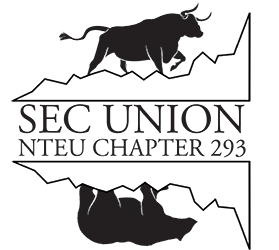Modest FEHBP Increase Undercut by 8.5% Rise in Blue Cross/Blue Shield Rates
9/13/07: The Office of Personnel Management (OPM) announcement today that the increase in health insurance premiums for enrollees in the Federal Employees Health Benefits Program (FEHBP) will average 2.1 percent in 2008 is severely undercut by the stunning 8.5 percent average increase in premiums for the Blue Cross/Blue Shield plan. Nearly 60 percent of the 8 million federal employees, retirees, and their family members in the FEHBP are enrolled in the Blue Cross plan.
“The increase to the Blue Cross/Blue Shield premium rates comes even though OPM used cash reserves to hold down overall increases to the plan,” said NTEU President Colleen M. Kelley. “With more than 4 million people in the Blue Cross plan, this is a rate hike of staggering impact.”
This marks the second year that OPM has allowed insurance companies to draw down cash reserves to offset the cost of their plans. “I am concerned about the potential risks—such as the impact of sharply-higher and unexpected levels of claims—inherent in turning to this strategy on a long-term basis,” Kelley said.
OPM also today announced the establishment of a Blue Cross/Blue Shield Health Savings Account (HSA) pilot program in Kansas/Missouri, Minnesota, Ohio and Tennessee, a move criticized by President Kelley. HSAs allow individuals to put aside money in a tax-exempt savings account to be used for health care costs.
NTEU has in the past warned that these plans threaten the stability of the FEHBP by drawing in enrollees who do not anticipate high health care costs for that plan year leaving a smaller pool of people in the traditional plans. The smaller pool could trigger even higher health care costs for those federal employees and retirees in those plans. “This is a bad idea for the overall health of the FEHBP,” Kelley said.
The more prudent course, she said, would be to increase the government’s share of the premium from an average of 72 percent to the average 80 percent that is widely paid in the private sector; and use the considerable leverage on premiums that should come from FEHBP’s status as the nation’s largest group health plan.
Pending legislation advanced by House Majority Leader Steny Hoyer (D-Md.) would boost the government’s share of FEHBP premiums to an average of 80 percent.
OPM also announced that premiums for the popular dental insurance program, instituted only a year ago, will rise sharply by 6.1 percent.
Unlike the FEHBP itself, under which the cost is shared by the government and employees, federal workers pay the entire premium for their dental care plan on a pre-tax basis. President Kelley also called on OPM to take advantage of the substantial prescription drug subsidy to which it is entitled under Medicare. “This could be a significant factor in holding down premium increases,” she said, “and it is unfair to FEHBP enrollees that OPM is failing to take advantage of it.”
